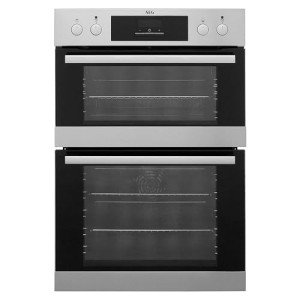Why The Biggest "Myths" About Oven Built In Could Be True

The Rise of Built-In Ovens: A Seamless Approach to Modern Cooking
In contemporary kitchen areas, where style aesthetic appeals blend perfectly with functionality, one appliance stands apart as a true video game changer: the built-in oven. As house owners and chefs alike continue to seek ingenious options that boost their cooking experience, built-in ovens have become increasingly popular. This article checks out the benefits, considerations, and trends surrounding built-in ovens, highlighting why they are a necessary feature in modern cooking spaces.
What is a Built-In Oven?
A built-in oven is a kitchen area home appliance created to be integrated into the cabinetry of a cooking area rather than standing alone. Unlike traditional freestanding ovens, which can be moved and positioned anywhere, built-in ovens come in different styles and sizes to fit particularly within designated areas. Available in single or double configurations, these ovens offer a streamlined look that matches modern kitchen area designs.
Advantages of Built-In Ovens
1. Space-Saving Design
Among the most enticing benefits of built-in ovens is their space-saving style. By integrating the oven into cabinetry, you can release up valuable counter and floor space. This is especially advantageous in smaller sized kitchens, where optimizing room is necessary. Built-in ovens can be set up at eye level, making them more available and minimizing the requirement to bend down.
2. Aesthetic Appeal
Built-in ovens add to a streamlined and cohesive kitchen area design. Readily intergrated electric oven in various finishes-- such as stainless steel, black, white, and custom cabinets-- they can mix flawlessly into the overall decoration. This visual appeal boosts the cooking area's visual consistency and elevates the space, creating a modern and advanced atmosphere.
3. Boosted Functionality
Many built-in ovens come equipped with advanced cooking technologies, such as convection cooking, steam ovens, and clever features. These enhancements enable versatile cooking choices, making it easier to achieve professional-level results at home. Smart built-in ovens can even connect to Wi-Fi, making it possible for users to manage the oven remotely, receive alerts, and gain access to a range of cooking programs and dishes.
4. Improved Ventilation
Since built-in ovens can be integrated with kitchen area hoods and ventilation systems, they can help maintain better air quality and minimize cooking smells. This is specifically substantial for those who love to cook with aromatic spices and active ingredients, as a reliable ventilation system can keep the cooking area comfortable and welcoming.
5. Personalization Options
Built-in ovens provide a vast array of modification choices to fit private cooking styles and requirements. From professional-grade home appliances with several cooking modes to compact styles for smaller sized kitchens, house owners can select the oven that fits their specific requirements. Lots of producers also use customizable front panels, permitting you to match the oven's look to your cabinetry for a truly merged look.
Considerations When Choosing a Built-In Oven
While built-in ovens have numerous benefits, there are important considerations to remember before purchasing:
1. Price
Built-in ovens usually include a greater cost than their freestanding counterparts due to their style and installation requirements. It's important to aspect in both the expense of the oven and any extra expenditures related to cabinets modifications or installation.
2. Installation Requirements
Installing a built-in oven often needs expert support, particularly if you require to modify existing cabinetry. Ensure that you think about any expenses connected with installation, including labor and prospective cabinets adjustments.
3. Size and Dimensions
Before purchasing a built-in oven, determine the designated area precisely to make sure a correct fit. Built-in ovens come in numerous sizes and configurations, so selecting one that aligns with your needs and kitchen area style is crucial.
4. Lifestyle and Usage
Consider your cooking habits and requires when picking a built-in oven. If you frequently host large gatherings, a double oven might be more beneficial. On the other hand, if you have a compact cooking area, a single-wall oven may be sufficient.
Patterns in Built-In Ovens
The cooking area device market is constantly developing, and built-in ovens are not exempt from emerging patterns. Some present patterns consist of:
Smart Technology Integration: With the rise of smart home innovation, built-in ovens now often include connectivity alternatives. This permits users to keep an eye on cooking progress and change settings through mobile apps.
Energy Efficiency: As sustainability ends up being a concern, many manufacturers are buying energy-efficient built-in ovens that decrease energy usage while maintaining performance.
Multi-functional Designs: Built-in ovens now offer functions such as air frying, slow cooking, and steaming, supplying adaptability that meets a large range of cooking approaches.
Conclusion

Built-in ovens unquestionably represent an ideal mix of style, function, and benefit in today's cooking areas. As more homeowners choose this modern-day service, the focus shifts to creating a cooking area that is as aesthetically pleasing as it is useful. Whether you are developing a brand-new home or renovating your kitchen area, considering a built-in oven could raise your cooking experience and transform your kitchen into a stylish and practical haven. With a selection of alternatives readily available and ongoing innovations in technology, built-in ovens remain a standout option for both novice cooks and culinary lovers alike.
